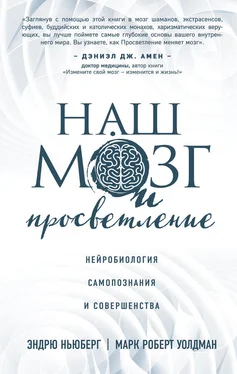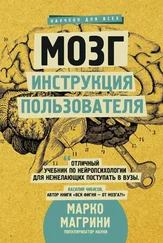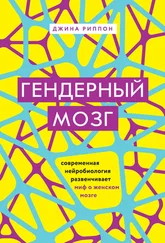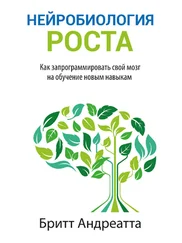12Palmer R.F., Katerndahl D., Morgan-Kidd J. A randomized trial of the effects of remote intercessory prayer: interactions with personal beliefs on problem-specific outcomes and functional status. J Altern Complement Med. 2004; 10(3): 438–448.
13Hefti R., Koenig H.G. Prayers for patients with internal and cardiological diseases – an applicable therapeutic method? MMW Fortschr Med. 2007; 149(51–52): 31–34.
14Moreira-Almeida A., Koss-Chioino J.D. Recognition and treatment of psychotic symptoms: spiritists compared to mental health professionals in Puerto Rico and Brazil. Psychiatry. 2009; 72(3): 268–283.
15Hoşrik E.M., Cüceloðlu A.E., Erpolat S. Therapeutic effects of Islamic intercessory prayer on warts. J Relig Health. 2014; 10.1007/s10943-014-9837.
16Schjoedt U., Stødkilde-Jørgensen H., Geertz A.W., Lund T.E., Roepstorff A. The power of charisma – perceived charisma inhibits the frontal executive network of believers in intercessory prayer. Soc Cogn Affect Neurosci. 2011; 6(1): 119–127.
17Rouder J.N., Morey R.D., Province J.M. A Bayes factor metaanalysis of recent extrasensory perception experiments: comment on Storm, Tressoldi, and Di Risio (2010). Psychol Bull. 2013; 139(1): 241–247.
18Mossbridge J.A., Tressoldi P., Utts J., Ives J.A., Radin D., Jonas W.B. Predicting the unpredictable: critical analysis and practical implications of predictive anticipatory activity. Front Hum Neurosci. 2014; 8: 146.
19Kuo W.J., Sjöström T., Chen Y.P., Wang Y.H., Huang C.Y. Intuition and deliberation: two systems for strategizing in the brain. Science. 2009 Apr 24; 324(5926): 519–522.
20Allman J.M., Watson K.K., Tetreault N.A., Hakeem A.Y. Intuition and autism: a possible role for Von Economo neurons. Trends Cogn Sci. 2005; 9(8): 367–373.
21Hsu M., Anen C., Quartz S.R. The right and the good: distributive justice and neural encoding of equity and efficiency. Science. 2008; 320(5879): 1092–1095.
22Ralph Oesper, The Human Side of Scientists (Cincinnati, OH: University Publications, 1975).
23Błażek M., Kaźmierczak M., Besta T. Sense of purpose in life and escape from self as the predictors of quality of life in clinical samples. J Relig Health. 2015; 54(2): 517–523.
24Mariano J.M., Going J. Youth purpose and positive youth development. Adv Child Dev Behav. 2011; 41: 39–68.
25Keng S.L., Smoski M.J., Robins C.J. Effects of mindfulness on psychological health: a review of empirical studies. Clin Psychol Rev. 2011; 31(6): 1041–1056.
26Potter P.J. Energy therapies in advanced practice oncology: an evidence-informed practice approach. J Adv Pract Oncol. 2013; 4(3): 139–151.
Глава 8. Открой свое сердце
1Sauvage C., Jissendi P., Seignan S., Manto M., Habas C. Brain areas involved in the control of speed during a motor sequence of the foot: real movement versus mental imagery. J Neuroradiol. 2013; 40(4): 267–280; Thaut M.H., Demartin M., Sanes J.N. Brain networks for integrative rhythm formation. PLoS One. 2008; 3(5): e2312; см. также: Esposti R., Cavallari P., Baldissera F. Feedback control of the limbs position during voluntary rhythmic oscillation. Biol Cybern. 2007; 97(2): 123–136.
2Online Encyclopedia Britannica: http: //www.britannica.com/EBchecked/ topic/ 123937/Codex-Argenteus. (Авторы имеют в виду английское слово «God». – Прим. пер .).
3M.Smith, The Origins of Biblical Monotheism: Israel’s Polytheistic Background and the Ugaritic Texts (Oxford, England: Oxford University Press, 2001).
4W.A.Meyer, B.Hyde, F.Muqaddam, and S.Kahn, Physicians of the Heart: A Sufi View of the 99 Names of Allah (Sufi Ruhaniat International, 2011).
5Gerard McCool, «The Christian Wisdom Tradition and Enlightenment Reason,» in Examining the Catholic Intellectual Tradition , eds. Anthony Cernera and Oliver Morgan (Fairfield, CT: Sacred Heart University Press, 2000).
6Muhammad Hozien and Valerie Turner, eds., Al-Ghazali: The Marvels of the Heart , Book 21 (Louisville, KY: Fons Vitae, 2010).
7W.M.Watt, The Faith and Practice of Al-Ghazali (London: George Allen and Unwin Ltd., 1953).
8Weng H.Y., Fox A.S., Shackman A.J., Stodola D.E., Caldwell J.Z., Olson M.C., Rogers G.M., Davidson R.J. Compassion training alters altruism and neural responses to suffering. Psychol Sci. 2013; 24(7): 1171–1180.
9Light S.N., Heller A.S., Johnstone T., Kolden G.G., Peterson M.J., Kalin N.H., Davidson R.J. Reduced right ventrolateral prefrontal cortex activity while inhibiting positive affect is associated with improvement in hedonic capacity after 8 weeks of antidepressant treatment in major depressive disorder. Biol Psychiatry. 2011; 70(10): 962–968.
10Doufesh H., Faisal T., Lim K.S., Ibrahim F. EEG spectral analysis on Muslim prayers. Appl Psychophysiol Biofeedback. 2012; 37(1): 11–18.
11Alabdulwahab S.S., Kachanathu S.J., Oluseye K. Physical activity associated with prayer regimes improves standing dynamic balance of healthy people. J Phys Ther Sci. 2013; 25(12): 1565–1568.
12Hosseini M., Salehi A., Fallahi Khoshknab M., Rokofian A., Davidson P.M. The effect of a preoperative spiritual/religious intervention on anxiety in Shia Muslim patients undergoing coronary artery bypass graft surgery: a randomized controlled trial. J Holist Nurs. 2013; 31(3): 164–172.
13Moss A.S., Wintering N., Roggenkamp H., Khalsa D.S., Waldman M.R., Monti D., Newberg A.B. Effects of an 8-week meditation program on mood and anxiety in patients with memory loss. J Altern Complement Med. 2012; 18(1): 48–53.
14Hansen G. Schizophrenia or spiritual crisis? On «raising the kundalini» and its diagnostic classification. Ugeskr Laeger. 1995; 157(31): 4360–4362.
15Wise R.A. Dopamine and reward: the anhedonia hypothesis 30 years on. Neurotox Res. 2008; 14(2–3): 169–183.
16von Kirchenheim C., Persinger M.A. Time distortion – a comparison of hypnotic induction and progressive relaxation procedures: a brief communication. Int J Clin Exp Hypn. 1991; 39(2): 63–66.
17Ulrich M., Keller J., Hoenig K., Waller C., Grön G. Neural correlates of experimentally induced flow experiences. Neuroimage. 2014; 86: 194–202.
18Kounios J., Beeman M. The cognitive neuroscience of insight. Annu Rev Psychol. 2014; 65: 71–93.
19Yoder K.J., Decety J. The Good, the bad, and the just: justice sensitivity predicts neural response during moral evaluation of actions performed by others. J Neurosci. 2014; 34(12): 4161–4156.
20Вольная интерпретация по мотивам поэм Хафиза Ширази. Автор английской версии – Марк Роберт Уолдман. © 2010.
Глава 9. Вера в преображение
1Heiphetz L., Spelke E.S., Harris P.L., Banaji M.R. The development of reasoning about beliefs: Fact, preference, and ideology. J Exp Soc Psychol. 2013; 49(3): 559–565.
2Epley N., Converse B.A., Delbosc A., Monteleone G.A., Cacioppo J.T. Believers’ estimates of God’s beliefs are more egocentric than estimates of other people’s beliefs. Proc Natl Acad Sci USA. 2009; 106(51): 21533–21538.
3Ogawa A., Yamazaki Y., Ueno K., Cheng K., Iriki A. Neural correlates of species-typical illogical cognitive bias in human inference. J Cogn Neurosci. 2010; 22(9): 2120–2130.
4Galante J., Galante I., Bekkers M.J., Gallacher J. Effect of kindness-based meditation on health and well-being: A systematic review and meta-analysis. J Consult Clin Psychol. 2014; 82(6): 1101–1114.
5Garrison K.A., Scheinost D., Constable R.T., Brewer J.A. BOLD signal and functional connectivity associated with loving kindness meditation. Brain Behav. 2014; 4(3): 337–347; см. также: Lutz A., Brefczynski-Lewis J., Johnstone T., Davidson R.J. Regulation of the neural circuitry of emotion by compassion meditation: effects of meditative expertise. PLoS One. 2008; 3(3): e1897.
Читать дальше
Конец ознакомительного отрывка
Купить книгу

![Амит Кетвала - Атлетичный мозг [Как нейробиология совершает революцию в спорте и помогает вам добиться высоких результатов]](/books/33773/amit-ketvala-atletichnyj-mozg-kak-nejrobiologiya-so-thumb.webp)




![Бритт Андреатта - Нейробиология перемен [Почему наш мозг сопротивляется всему новому и как его настроить на успех]](/books/395732/britt-andreatta-nejrobiologiya-peremen-pochemu-nash-thumb.webp)





